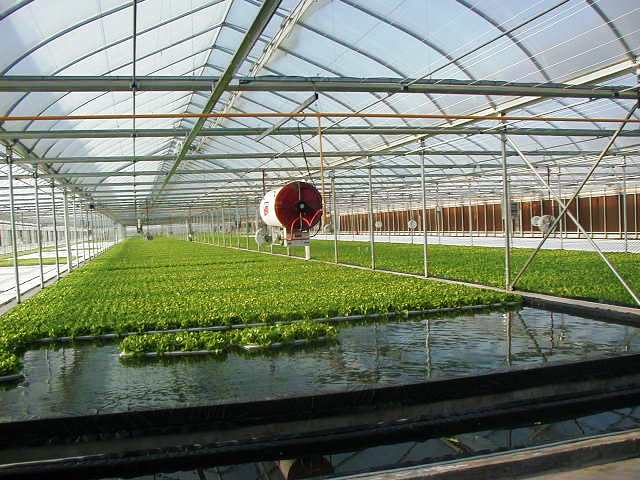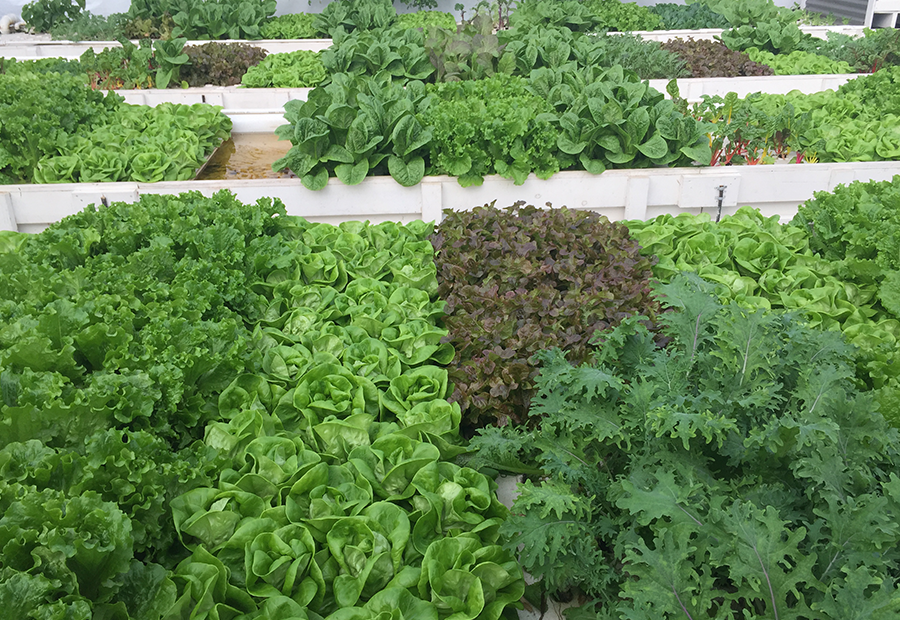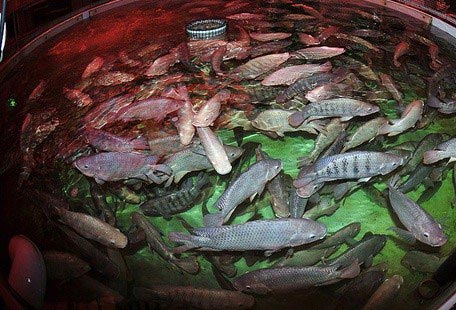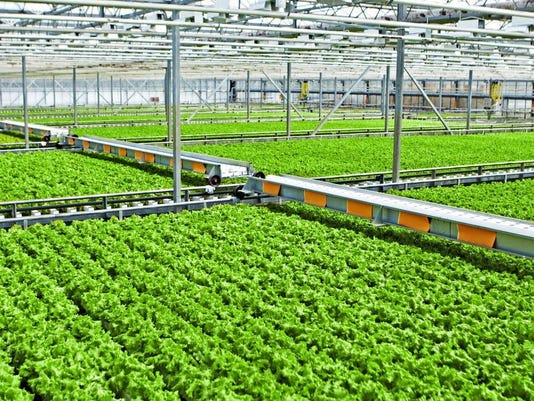
Aquaponics: sustainable food for the future
Aquaponics is a system where you can sustainably raise fish and vegetables in almost any environment. The fish component of this operation is completed indoors. The fish are raised in tanks with a recirculating water system. The water goes from the fish tank into a filtration system that removes the solids and converts the harmful ammonia from the fish to nitrate that can be used as plant fertilizer. Part of the water is returned to the fish while the rest is sent to a nearby greenhouse.
The greenhouses use a hydroponic system to raise vegetables or other plants. In a hydroponic system the plant roots are suspended in a floating mat or other media rather than soil. The plants use the nitrates produced by the fish as fertilizer. This soilless system allows greater control over what goes or doesn’t go into the plants. Environmental toxins that are often found in soil can be eliminated through this process. This provides a “cleaner” product. This system also provides capability of year-round production.
Aquaponics systems can be set up in virtually any location. One example of this is to set up in an unused warehouse space in a city. This provides a local source for protein and produce. There are many green advantages to this.

The top three are:
Lower Carbon Footprint. Being located locally removes the need for transporting long distance. Virtually everything shipped is moved by burning hydrocarbons- Diesel or gasoline primarily. Shorter distance equals lower carbon footprint.
Helping to ease the strain on our overburdened farmland and water supply. Many of the agricultural areas in this country are irrigated with water drawn from systems such as the Colorado River. Open irrigation in an area that is almost a desert is very inefficient and leads to heavy water loss to evaporation. The loss of topsoil and nutrient depletion in many farming areas has become almost critical. This leads to a dependence on chemical fertilizer and pesticides.
Our third major advantage to Aquaponics is the lack of dependence on chemical fertilizer. The nitrate produced by the fish is used as fertilizer for the plants. This also cleans the excess nitrate from the water. Nitrate pollution in surface and groundwater has often been traced back to over fertilization of agricultural crops with chemical fertilizer.
Aquaponics systems can raise virtually any species of fish. At JustBeGreen Farms our favored species is the Barramundi. This species is native to Australia and south East Asia. It has a texture and flavor similar to grouper and is popular with chefs worldwide.


The Barramundi is a large fast-growing fish that does well in confined areas. This makes them ideal for Aquaponics production. The high-quality meat of the Barramundi is also very nutritious, containing an omega 3 fatty acid level higher than most salmon species. These fish are able to produce this high-quality meat on a much lower quality diet than other species. This allows us more options in our feed production, which in turn allows us a greater ability to follow the principles of Green Sustainability that JustBeGreen Farms is founded on.
This has been a quick overview of the exciting and expanding field of Aquaponics. At JustBe Green Farms our driving force is environmentally sound, sustainable agriculture to provide food for generations to come while protecting our environment.
It is the intent for the JBG Farms facility to capitalize on this emerging trend of producing healthy food products. Within the proposed facility, which will be located within the land plan of JustBeGreen Villages America, to be built out over a 7-year period.

